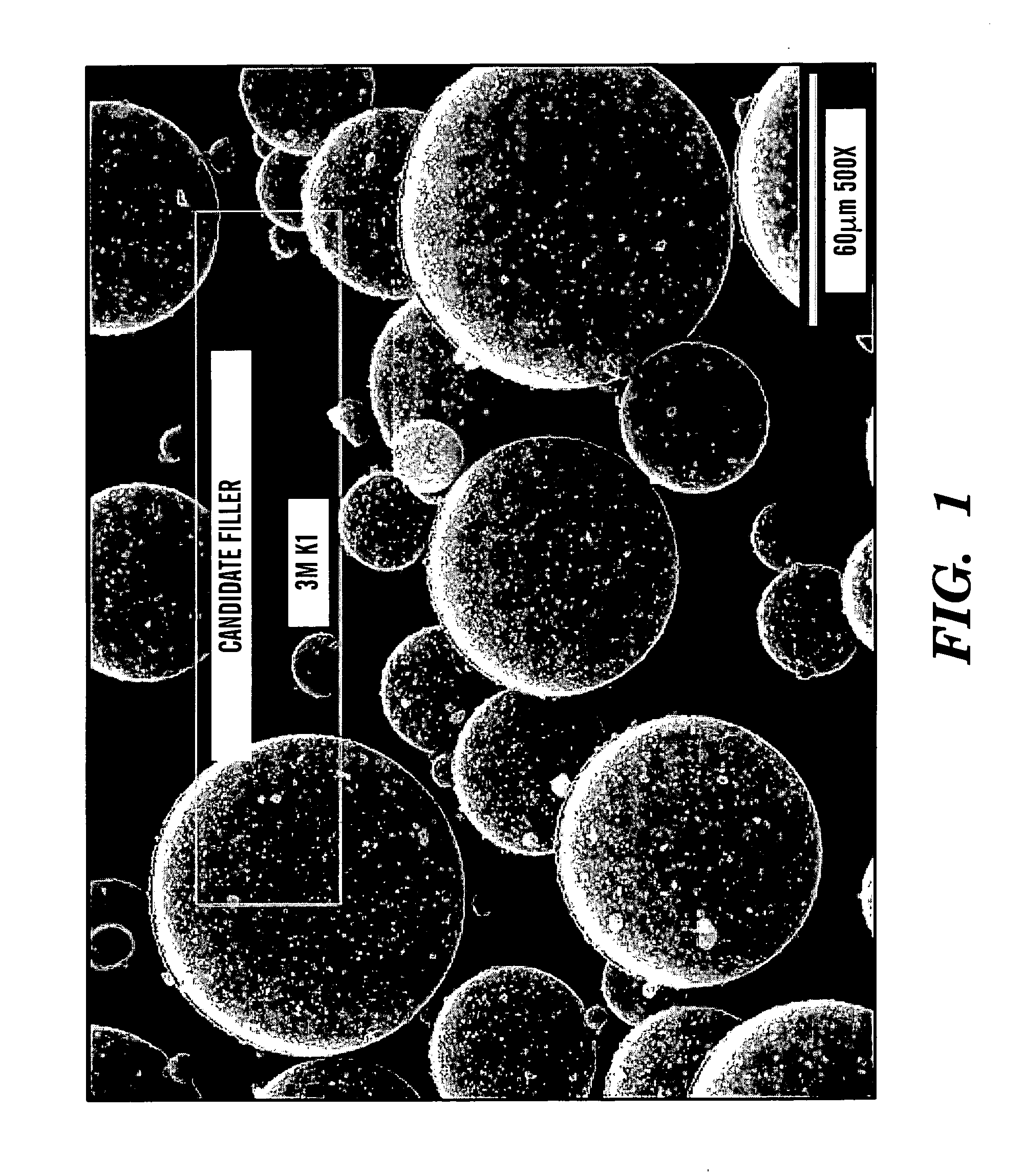Process for enhancing material properties and materials so enhanced
a technology of enhanced materials and properties, applied in the field of composite insulation materials, can solve the problems of increased brittleness, high cost, and high cost of best thermal insulation materials, and achieve the effects of reducing durability and strength of syntactic foam, overcoming the disadvantage of stiffness, and increasing flexibility
- Summary
- Abstract
- Description
- Claims
- Application Information
AI Technical Summary
Benefits of technology
Problems solved by technology
Method used
Image
Examples
example 1
Selection of Materials for Development of a Hybrid Thermal Insulation for Use in Deep Sea Diving Suits
[0073]The current insulation used in NAVY diving, foamed neoprene, is a closed cell elastomeric foam. This insulation does not have sufficient thermal resistance for use in deep water. In particular, when this insulation is exposed to hydrostatic pressures of 350 feet of sea water, it compresses 70 percent. Due to this compressibility, the volume fraction of gas present in the foam insulation decreases 70 percent, thereby increasing the thermal conductivity by 200 percent. This change in thickness and thermal conductivity decreases the thermal resistance of the insulation (ratio of thickness to thermal conductivity) by 84 percent.
[0074]To overcome this inherent material flaw, various different materials have been and are being investigated to develop a new insulating material for divers. Along with the desirable thermal characteristics, the new insulation should also be flexible, st...
example 2
Testing of Effective Thermal Conductivity of ASPEN™ Aerogel Blanket Under Hydrostatic Loading
[0085]The total thermal conductivity can be expressed by the sum of three components: solid conductivity through the porous silica gel matrix, radiation through the voids, and conduction through the gas (Hrubesh et al., “Thermal Properties of Organic and Inorganic Aerogels,”J. Mater. Res. 9(3):731–738 (1994), which is hereby incorporated by reference in its entirety). Due to the high porosity of aerogel the solid conductivity can be a factor of 500 times lower than in non-porous silica (Scheuerpflug et al., J. Phys D: Appl. Phys. 24:1395 (1991), which is hereby incorporated by reference in its entirety). The solid conductivity can thus be approximated to be proportional to the density in the following way
ks∝ρα (4)
where α≈1.5 in the density range ρ=70–300 kg / m3 (Lu et al., “Thermal Transport in Organic and Opacified Silica Monolithic Aerogels,”Journal of Non-Crystalline Solids 145:207–210 (1...
example 3
A New Hybrid Laminated Tenderized Syntactic Foam / Encapsulated Aerogel Insulation
[0089]One embodiment of the composite insulation material of the present invention contains a layer of syntactic foam and an arrangement of circular aerogel blanket pieces embedded between the syntactic foam and the outermost laminations of a durable, flexible, stretchable material such as spandex. Syntactic foam is made from a suitable matrix (e.g., two-part silicone) and a suitable filler (e.g., microspheres) and plasticizers.
[0090]Syntactic foam was made by manually weighing and mixing the following components, per preferred formulation: silicone rubber components; plasticizer; and microsphere glass beads. The mixture was then evacuated (prior to cure) in a chamber to remove entrained air by reducing the chamber pressure by about 27″ Hg vacuum for a period of about 20 minutes. As an example, the syntactic foam may have the following components: (1) filler (e.g., 40% by volume 3M K1 microspheres); and / ...
PUM
| Property | Measurement | Unit |
|---|---|---|
| diameter | aaaaa | aaaaa |
| thickness | aaaaa | aaaaa |
| thickness | aaaaa | aaaaa |
Abstract
Description
Claims
Application Information
 Login to View More
Login to View More - R&D
- Intellectual Property
- Life Sciences
- Materials
- Tech Scout
- Unparalleled Data Quality
- Higher Quality Content
- 60% Fewer Hallucinations
Browse by: Latest US Patents, China's latest patents, Technical Efficacy Thesaurus, Application Domain, Technology Topic, Popular Technical Reports.
© 2025 PatSnap. All rights reserved.Legal|Privacy policy|Modern Slavery Act Transparency Statement|Sitemap|About US| Contact US: help@patsnap.com



